Indian Freedom Struggle EssayFreedom is earned and cannot be expected to be achieved without making efforts for it. This world can be a gruesome environment of inequalities between people. Many will think they are superior and consider others to be inferior. They may either wish to subjugate others or eliminate them completely. But the desire to rise up and protest is a natural thing to do. There are some individuals who can't resist the idea of inequality and injustice. They can take on the challenge and defeat the odds. These are known as freedom fighters. India's freedom movement wouldn't have succeeded if our brave freedom fighters had not fought against the Britishers. The Indian freedom movement was a large-scale campaign that led to an end to British rule in India and its creation as an autonomous nation. The movement was initiated by Indian nationalists as well as people belonging to the Congress party that demanded Independence from British rule. India had a strong freedom movement that began in the latter part of the 19th century. It was headed by Indian nationalist leaders who sought to liberate India from British rule. They also sought to establish an independent social, democratic, and socialist state. The Indian independence movement was a major protest in India to obtain freedom from British rule. It started in the late 1800s and culminated in India's Independence of India in 1947. Veer Savarkar, Bhagat Singh, Uddham Singh, Tantia Tope, Mahatma Gandhi, and many others are among the most well-known Indian leaders and freedom fighters. They launched a national civil disobedience movement to protest against the British Empire. A quick timeline of India's Freedom Struggle- First War of Independence- 1857The Indian Mutiny, aka the Sepoy Mutiny, was the stepping stone for the revolt of 1857. It started in Meerut and then extended across Delhi, Agra, Kanpur, and Lucknow. Following the outbreak at Meerut, the rebels soon arrived in Delhi in the city of Delhi. Bahadur Shah Zafar, the final Mughal Emperor, was at the helm from 1837 until 1857. In the aftermath of the war for Independence in 1857, he was exiled to Rangoon in 1858. He passed away in 1862. Lakshmi Bai, the Rani of Jhansi and an Indian leader, took part in the battle against the British in 1857 itself. She quickly organized her troops and took charge of the protesters in the region of Bundelkhand. Under the command of Gen. Hugh Rose, the East India Company's troops began their counter-offense in Bundelkhand in the month of January 1858. The Creation of the Indian National Congress- 1885As a response to the growth of British power over India, a massive Indian movement took place, formed by Indian reformists. It came to be known as Indian National Movement. This would eventually lead to the creation of the Indian National Congress under these reformists in 1885. On December 28, Indian National Congress had its very first session in Bombay and it was attended by 72 delegates. The year 1905 saw the Partition of Bengal, announced by Lord Curzon. It led to an enormous upsurge in the population, as well as a demand for swadeshi items, leading to the boycott of British manufactured products. Lord Randolph Churchill became secretary of India. The Swadeshi Movement (1905-1908)From conservative moderation to extreme political zeal, from terrorism to the beginnings of socialism, from public petitions and speeches to boycotts and passive resistance, all of them had their roots within the movement. Swadeshi is a combination of two Sanskrit words that are swa ("self") and desh ("country"). The movement grew popular with the consumption and use of products made by indigenous people. Indians began to abandon British products for Indian products. Students, women, and a large portion of the rural and urban inhabitants from Bengal and other regions of India were actively involved in politics for the first time in the Swadeshi Movement. The missive of Swadeshi and the ban on products from abroad quickly became known throughout the country. The militant nationalists led by Bal Gangadhar Tilak, Bipin Chandra Pal, and others supported the idea of expanding the movement into the remainder of India and taking it past the program of only Swadeshi and boycotts to a full-fledged mass political fight. Their goal was Swaraj. The Home Rule Movement (1916-1918)Annie Besant and Bal Gangadhar Tilak led the Home Rule Movement. It was a significant political movement that established the stage for India's struggle to gain Independence. Annie Besant moved to India around 1893 in order to be a part of the Theosophical Society. In 1914, she made the decision to broaden the scope of her work. She initiated a movement to promote Home Rule. It was clear that she needed support from both Moderates as well as Extremists. At the annual session of the Congress in 1915, the decision was taken. Extremists were allowed to rejoin Congress together with the Moderates. Tilak created The Home Rule League in the Bombay Province. Champaran Movement in Bihar (1917)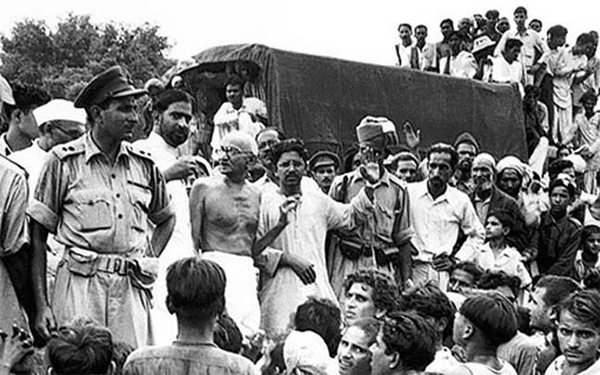
Mahatma Gandhi, following his fight against apartheid in South Africa (racial discrimination against blacks) for more than twenty years, came back to India in 1915. Following the advice of Gokhale, he went on a year-long journey around British India to understand the difficulties faced by Indians. He initially kept a distance from politics and even his involvement in the Home Rule Movement, which was growing in popularity at the time. Mahatma Gandhi started his experiments with Satyagraha in the struggle against inhumane European indigo planters in Champaran near Bihar in the year 1917. Champaran's problem actually began in the 19th century. European planters signed arrangements with Indian farmers and forced them to cultivate indigo on the 3/20th of their land. There was a constant rumbling of protests among cultivators and planters as a result of the exploitation methods adopted by the British under the pretext of the cultivation of indigo. In 1908, Raj Kumar Shukla, a local man, convinced Gandhiji to visit Champaran to look into the issue. Gandhiji made it to Champaran but was met with objections from the commissioner, who demanded that he quit the district. Gandhiji refused. He was more inclined to accept the penalty for his obstructing the law. This was a unique choice, considering that many Home Rule leaders used to comply with the law. The British Government didn't want any controversy, so they instructed the local Government to withdraw. They let Gandhiji continue his inquiry and even named him one of the inquiry members within the Government. Then, Gandhiji began to investigate upon the complaints of the farmers. J.B. Kripalani toured the villages and recorded the confessions of the peasants. Gandhiji did not have a problem persuading the Commission to declare that the Tinkathia system must be eliminated and peasants must be compensated for the unlawful increase of their dues. The Commission was adamant that the founding planters were guilty of the exploitation. The inquiry committee decided to issue refunds to the poor. Gandhi requested 50 percent. However, the planters' representative said they would refund 25 per cent. To solve the impasse, Gandhiji accepted the payment of 25 per cent to farmers. For Gandhi, the most important thing was not the amount of money but his values. He believed that the submission of British landlords was far more important than the proportion of refunds. Kheda Satyagraha in Gujarat (1918)The Kheda district in Gujarat was at risk of starvation due to the failure of the crops. The yield was too low, and farmers were unable to pay taxes. However, the Government demanded that cultivators must pay the tax. Gandhi believed that justice must be done to the cultivators. Gandhiji suggested withholding taxes and also urged the peasants to fight until death against such a sense of tyranny and vindictiveness. The people of Kheda, who were already suffering due to the plague, high prices, and drought, began to show signs of weakening when Gandhiji discovered that the Government issued secret orders to ensure that the revenue was taken only from peasants who were able to pay. The Government stated that if the well-off cultivators had paid their fair share, the poorer sections were to be given a suspension. The Government agreed, and the campaign was put to rest. The Kheda Satyagraha signified the beginning of an awakening in the poor peasants in Gujarat and the start of their real political education. It also gave the public employees the opportunity to make contact with the daily life of the people. Rowlatt Satyagraha (1919)In the First World War of 1914-18, the British imposed censorship on the press and allowed the detention of prisoners without trial. The Imperial Legislative Council passed Rowlatt Act in Delhi on March 18, 1919. It meant an indefinite extension of emergency measures, detention without trial, and judicial review. The Act was passed because of perceived danger from the revolutionary nationalists to groups engaging in the same conspiracies as those that were involved during the war, which the Government believed that the lapse of the Defence of India Act would permit. This law was passed upon the recommendation of the Sedition Committee chaired by Sir Sidney Rowlatt. Gandhiji began the Satyagraha against the cruel Rowlatt Act. The protests were especially strong in Punjab. Gandhiji was arrested while taking part in the protests here. Jallianwala Bagh Massacre (1919)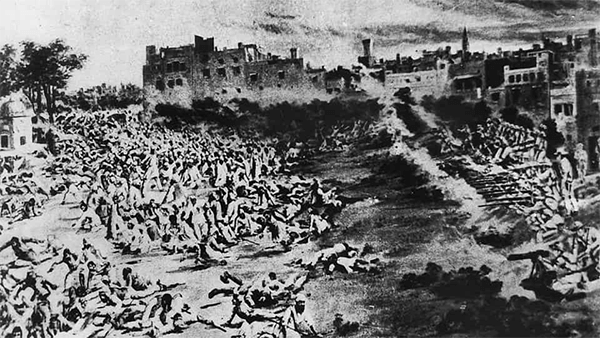
The passing of the Rowlatt Act in 1919 resulted in large-scale political unrest across India. A large, peaceful crowd was protesting in the Jallianwala Bagh for the release of freedom fighters who were taken to prison without any trial. As a reaction to the crowd in the Bagh, the British General Brigadier R. E. H. Dyer surrounded the Bagh along with his soldiers. General Dyer instructed his troops to fire on the rally, which killed hundreds. The violence of Jallianwala Bagh shocked the whole nation. The incident caused several conservative Indians in India to finally abandon earlier commitment toward the British and turn into nationalists, distrustful and apprehensive of British rule. Non-Cooperation Movement (1920)Gandhiji demanded a campaign for "non-cooperation" with British rule. Indians who wanted to end colonialism were asked to stay out of colleges, schools, and the courts of law. They were told not to pay any taxes. In essence, they were required to sign a "renunciation of all voluntary association with the British Government". Gandhiji declared that if the non-cooperation was carried out effectively, India would be able to attain swaraj within a year. When Congress convened for its annual session in Nagpur, C.R. Das proposed the principal resolution on non-cooperation. A number of groups of radical terrorists, particularly in Bengal, also pledged support for the movement. The purpose of the Congress at this point had changed to the realization of Swaraj with peaceful methods. Khilafat Movement (1919-24)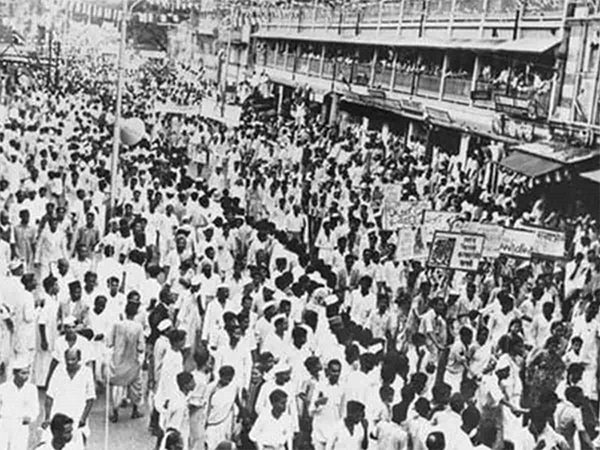
The Khilafat movement was a protest movement that was led by the Ali brothers- Muhammad Ali and Shaukat Ali, from British India, to restore the caliph of the Ottoman Caliphate, which was regarded as the leader among the Muslims. To broaden the scope of the Indian movement for freedom, Gandhiji joined hands with the Khilafat Movement. The movement collapsed by the end of 1922 after Turkey obtained a favourable diplomatic position and moved toward Nationalism. In 1924, Turkey eliminated the position of caliph. But the massive involvement by Muslims in the Non-Cooperation Movement and the maintenance of the communal unity regardless of Malabar developments was an accomplishment in itself. The Boycott of the Simon Commission (1927)On November 8, 1927, an all-white Simon Commission was appointed to decide if India was ready to undergo more constitutional reforms. Indian National Congress was against the Simon Commission because no Indian was there to represent Indian interests in the Commission. Protests were held in a variety of locations. Purna Swaraj (Complete Independence) Campaign (1929)In the Lahore session in 1929, Jawaharlal Nehru was made the president of the INC. He declared "Purna Swaraj," which translates to Complete Independence, as the only righteous objective Indians could strive for. On the banks of the Ravi River at midnight on December 31, 1929, India's tricolour flag was hosted. The first mission that Congress took on in the year ahead was the task of coordinating across the nation and planning public gatherings in the Independence Pledge would be read out and formally affirmed on January 26. Civil Disobedience Movement (1930)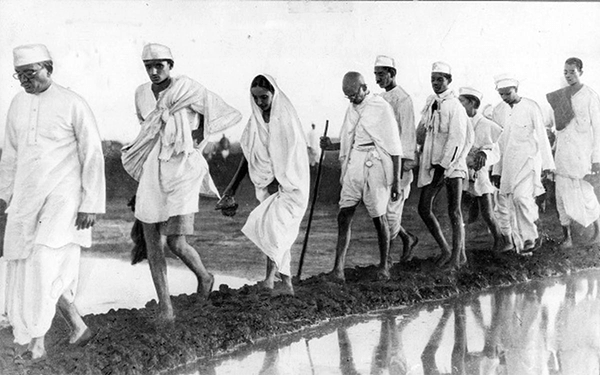
A working committee was made in the Lahore session of Congress in 1929 to launch a program for tax evasion. Gandhi's letter to Lord Irwin, in which he stated the most basic demand in 11 points, was ignored, and there was just one choice that was left- civil disobedience. Gandhi chose salt as his primary instrument to disobey. In every Indian household, salt was essential; however, people were prohibited from making salt, even for their own use, and forced people to purchase it from stores at a high price. The salt monopoly that was imposed by the state was highly unpopular. By making salt his goal, Gandhiji hoped to mobilize more people to protest against British rule. Gandhi, along with seventy-eight members belonging to the Sabarmati Ashram, started to march from Ahmedabad towards the coast at Dandi. He broke salt laws by collecting salt from the shore. On April 6, 1930, when he picked up some salt, Gandhi began his Civil Disobedience Movement - an event that would remain unmatched in the history of the Indian nation for the massive participation across the nation it unleashed. Gandhi-Irwin Pact (1931) and The Round Table Conferences (1930-32)British held a series of "Round Table Conferences" in London to discuss constitutional reforms in India. The first gathering was held in the month of November 1930. But, without the most powerful political leader of India, the meeting was a futile attempt. Gandhi got released from prison in the month of January 1931. The following month, he attended numerous lengthy meetings with Viceroy. They culminated in what was known as the "Gandhi-Irwin Pact'. The agreement provided for immediately releasing all political prisoners who have not been found guilty of violence, the remission of all fines that have not yet been collected, and returning confiscated land that is not yet offered to third parties, as well as lenient treatment for government employees who had resigned. The Government also agreed to grant the right to produce salt for consumption in villages located along the coast. They also granted the right to non-violent and peaceful picketing. Government of India Act (1935)The rising demands for reforms in the Constitution of India caused India's British Parliament to pass the Government of India Act in 1935. The Act offered a representative government and the creation of an All-India Federation based on the union of British Indian provinces and the Princely States. Foreign affairs and defense would not be in the jurisdiction of the federal legislature, while the Viceroy would maintain exceptional control over other areas. Quit India Movement (1942)The Quit India Movement was initiated during the Bombay session of the All-India Congress Committee by Mahatma Gandhi on August 8, 1942, calling for an end of British rule in India. In the course of this battle, the people of India showed unmatched strength and courage. The repression they were subjected to was the most brutal repression that has ever been employed against the national movement. Gandhiji was particular about absolute freedom and no more fragmented strategy from the British. He declared: "Do or die. This means either freedom for India or perishes in the fight. Gandhi demanded that government officials publicly declare their loyalty to Congress and not quit. Parallel governments in different regions of the nation were the most striking aspect of the Quit India Movement. Satara (Maharashtra) became the basis of the longest-lasting and most effective parallel government. Mountbatten Plan (1947)The legislators of The Indian National Congress, the Muslim League, and the Sikh community reached some agreement along with Lord Mountbatten over what came to be known as the June 3 Plan or the Mountbatten Plan. It was the last plan for Independence. The strategy announced by Viceroy Mountbatten on June 3, 1947, contained the following fundamentals:
The Mountbatten plan resulted in the enactment of the India Independence Act in 1947. India Independence Act (1947)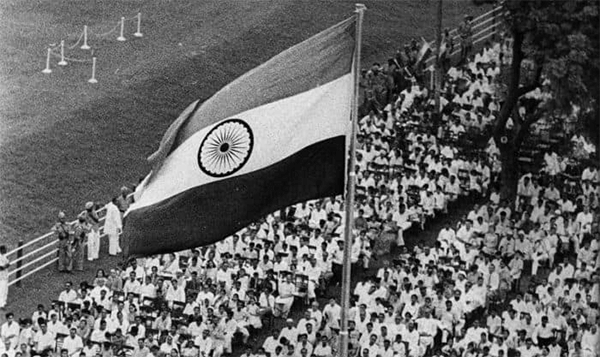
The Indian Independence Act 1947, passed by the Parliament of the United Kingdom, stated the division of India into two independent nations: the Dominion of India and the Dominion of Pakistan. The word dominion was later changed to 'Republic'. The Act was granted Royal Assent on July 18, 1947. On August 15, 1947, India and Pakistan were declared as independent countries. India continues to mark August 15 as its Independence Day, while Pakistan has decided to observe August 14 as its Independence Day as per their cabinet decisions. ConclusionIndia has a long and glorious history of its struggle for Independence. The times it has been ruled by foreign powers have seen an extraordinary unity amongst the people of India, no matter which state, religion, caste, or race they belonged to. This is the reason it is a proud bearer of the title of 'Unity in Diversity' because that is what makes it unique in the world.
Next TopicSelf-reliance with Integrity Essay
|
 For Videos Join Our Youtube Channel: Join Now
For Videos Join Our Youtube Channel: Join Now
Feedback
- Send your Feedback to [email protected]
Help Others, Please Share









